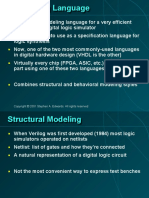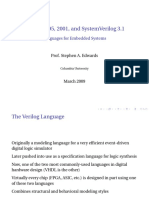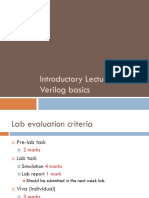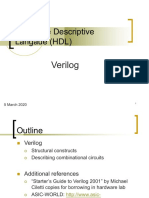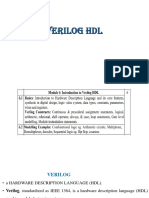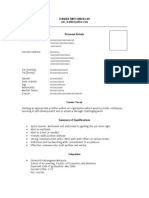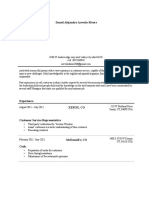100% found this document useful (3 votes)
2K views46 pagesVerilog Lecture Notes for EE Course
This document provides an overview and outline of a lecture on basic logic design with Verilog. It introduces Verilog as a hardware description language, describes different levels of abstraction in Verilog including gate level and behavioral level modeling. It also outlines topics to be covered such as test benches and provides examples of modeling gates in Verilog.
Uploaded by
kritti11Copyright
© Attribution Non-Commercial (BY-NC)
We take content rights seriously. If you suspect this is your content, claim it here.
Available Formats
Download as PDF, TXT or read online on Scribd
100% found this document useful (3 votes)
2K views46 pagesVerilog Lecture Notes for EE Course
This document provides an overview and outline of a lecture on basic logic design with Verilog. It introduces Verilog as a hardware description language, describes different levels of abstraction in Verilog including gate level and behavioral level modeling. It also outlines topics to be covered such as test benches and provides examples of modeling gates in Verilog.
Uploaded by
kritti11Copyright
© Attribution Non-Commercial (BY-NC)
We take content rights seriously. If you suspect this is your content, claim it here.
Available Formats
Download as PDF, TXT or read online on Scribd
/ 46












